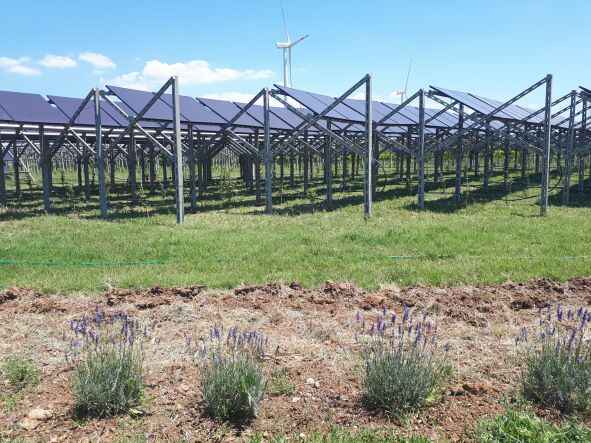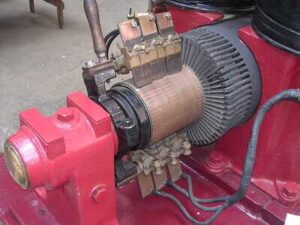5 Examples of Clean Energy Utilization Explained
Examples of clean energy utilization are; agrivoltaic system, hybrid solar-wave converter, tidal electricity generation, microgrid-transmitted wind power for remote locations, and ocean thermal energy conversion.
This article discusses examples of clean energy utilization, as follows;
1). Agrivoltaic System (as one of the Examples of Clean Energy Utilization)
One of the cleanest sources of energy is solar; which occurs in form of both heat (solar-thermal energy) and light.
Clean energy in agriculture is one of the objectives of sustainable farming, because it can play the essential role of reducing the carbon footprint and overall environmental impact, of agriculture. A classic example of the integration of clean energy with agriculture, is the agrivoltaic system.
Agrivoltaic system is an integrated sustainable system that is created when photovoltaic technologies like solar panels and concentrators, are installed on agricultural land in such a manner that is not intrusive to crop growth, and neither disrupts the natural functioning of the ecosystem.
Advantages of agrivoltaics include space efficiency, relatively-low cost, and simplicity.
Agrivoltaic systems can play a major role in the establishment of sustainable, green economies, especially in developing regions of the world [4]. When deployed optimally, they serve as a means to synergize the agricultural and energy sectors at various scales, and to reap the benefits of sustainability in both sectors [7].

2). Hybrid Solar-Wave Converter
A hybrid solar-wave converter is an integrated clean energy technology that is equipped with solar cells (that make up panels) and a wave energy converter to enable it simultaneously harness both solar and wave energies [6].
Hybrid solar-wave converters are a relatively recent concept compared to wave and solar technologies respectively. The advantage of hybrid clean energy systems include the conservation of space, and the availability of multiple energy options.
Hybrid solar-wave converters are often accompanied by some disadvantages that border around the ability to maximize each energy option available, while minimizing complexity.
Some hybrid systems utilize more than two energy options. These may be described as tri-energy, trigeneration, tri-renewable, or poly-energy systems. Examples include combined wave, wind and solar systems [5].
3). Tidal Electricity Generation (as one of the Examples of Clean Energy Utilization)
Tidal energy is both clean and renewable, because it comes from the rise and fall of seawater due to effects of orbital revolution of the Earth [1].
Tidal energy is environment-friendly, as it does not require any form of combustion to be released, and does not cause pollution or greenhouse emissions of any form.
To capture and utilize tidal energy, technological systems like oscillating hydrofoils and conventional tidal turbines can be used (the latter is similar to a hydro-turbine but sturdier and installed at greater depth).
Tidal energy is captured in the form of mechanical rotation or oscillation. This motion is used to operate a turbine generator which generate electricity based on the principle of electromagnetic induction.
The efficiency of tidal turbines for generating electricity, can be up to 80%, depending on specific details of scale, location and design.
4). Microgrid-Transmitted Wind Power
A wind microgrid system is an electricity generation and transmission system that is built to operate autonomously, and at smaller scale than a conventional grid system [2].
Because wind energy does not cause gaseous emissions or air pollution, wind-microgrid systems are clean energy systems.
Microgrids have the advantage of being autonomous and small-scale, which enables them to be used in remote areas that are out of reach of the national or municipal grid network [8].
It is not uncommon for a microgrid to be equipped with inverters, batteries and other components that serve multiple purposes including energy storage and management. Some microgrid systems may also incorporate smart devices for two-way transmission monitoring, metering, and power scheduling.
The transmission mode and capacity of a microgrid depends on its design.
For wind power transmission, the grid can be connected using electric cables, to individual wind turbines, or wind farms.
Microgrids can be connected to more than one renewable energy system, such as to wind and solar, or wind, solar and bioenergy.

5). Ocean Thermal Energy Conversion (as one of the Examples of Clean Energy Utilization)
Ocean thermal energy is clean energy that occurs in oceans as a result of the effect of long-term exposure to solar radiation, which causes significant differences in temperature with changes in water depth.
Basically, ocean thermal energy is a result of the role of oceans as a natural energy storage system for solar heat.
Ocean thermal energy conversion (OTEC) refers to the concept, practice, and technology of capturing thermal energy in the ocean, and converting this energy to electricity.
As an example of clean energy utilization, ocean thermal energy conversion shows how renewable energy can be harnessed in multiple forms from water, which is an efficient medium of energy storage.
It is among the promising options being developed to aid the energy transition from fossil fuels to more sustainable alternatives [3].
Conclusion
Examples of clean energy utilization are;
1. Agrivoltaic System
2. Hybrid Solar-Wave Converter
3. Tidal Electricity Generation
4. Microgrid-Transmitted Wind Power
5. Ocean Thermal Energy Conversion
References
1). Bharthi, D.; Hemavathi; Rani, S. (2017). “Tidal Energy- A Source Of Clean Energy”. International Journal of Current Research, 9, (09), 57923-57925. Available at: https://www.journalcra.com/article/tidal-energy-source-clean-energy. (Accessed 24 March 2023).
2). Canziani, F.; Vargas, R.; Gastelo-Roque, J. A. (2021). "Hybrid Photovoltaic-Wind Microgrid With Battery Storage for Rural Electrification: A Case Study in Perú." Frontiers in Energy Research 8:528571. Available at: https://doi.org/10.3389/fenrg.2020.528571. (Accessed 25 March 2023).
3). Du, T.; Jing, Z.; Wu, L.; Wang, H.; Chen, Z.; Ma, X.; Gan, B.; Yang, H. (2022). "Growth of ocean thermal energy conversion resources under greenhouse warming regulated by oceanic eddies." 2022Nature Communications 13(1). Available at: https://doi.org/10.1038/s41467-022-34835-z. (Accessed 24 March 2023).
4). Giri, N.C.; Mohanty, R.C. (2022). "Design of agrivoltaic system to optimize land use for clean energy-food production: a socio-economic and environmental assessment." Clean Techn Environ Policy 24, 2595–2606 (2022). Available at: https://doi.org/10.1007/s10098-022-02337-7. (Accessed 24 March 2023).
5). Ibrahimn M. Z.; Lafsah, M. D.; Albani, A. (2015). "WWS hybrid tri-renewable power system to generate electricity (WWS: Wave.Wind.Solar)." Journal of Computational and Theoretical Nanoscience 21(12):3632-3634. Available at: https://doi.org/10.1166/asl.2015.6546. (Accessed 24 March 2023).
6). Jahangir, M. H.; Shahsavari, A.; Vaziri, M. A. (2020). "Feasibility study of a zero emission PV/Wind turbine/Wave energy converter hybrid system for stand-alone power supply: A case study." Journal of Cleaner Production 262:121250. Available at: https://doi.org/10.1016/j.jclepro.2020.121250. (Accessed 24 March 2023).
7). Walston L. J.; Barley, T.; Bhandari, I.; Campbell, B.; McCall, J.; Hartmann, H. M.; Dolezal, A. G. (2022). "Opportunities for agrivoltaic systems to achieve synergistic food-energy-environmental needs and address sustainability goals." Front. Sustain. Food Syst. 6:932018. Available at: https://doi.org/10.3389/fsufs.2022.932018. (Accessed 24 March 2023).
8). Żołądek, M.; Kafetzis, A.; Figaj, R.; Panopoulos, K. (2022). "Energy-Economic Assessment of Islanded Microgrid with Wind Turbine, Photovoltaic Field, Wood Gasifier, Battery, and Hydrogen Energy Storage." Sustainability, MDPI, vol. 14(19), pages 1-23, September. Available at: https://econpapers.repec.org/article/gamjsusta/v_3a14_3ay_3a2022_3ai_3a19_3ap_3a12470-_3ad_3a930370.htm. (Accessed 25 March 2023).

